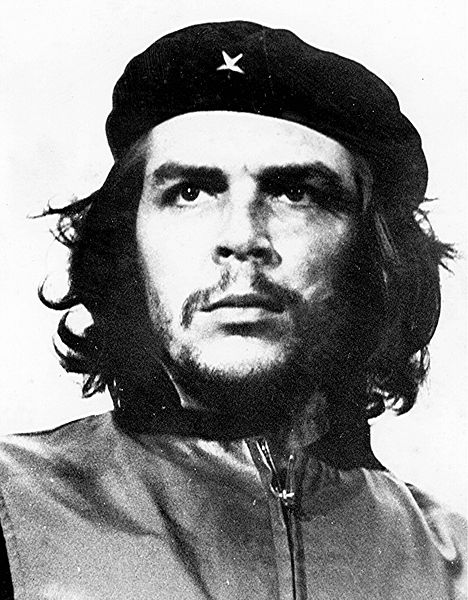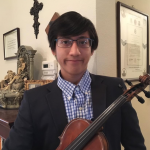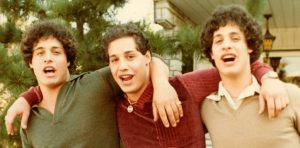His face is known all over the world. With his long thick hair and charismatic stare, Che Guevara is globally recognized as a symbol for revolution and rebellion. He was the young medical student who sought to free the world not only from disease but also from oppression, poverty, and corruption by any means necessary. Around the world, especially in Latin America, Che Guevara is seen as a hero of the poor. But in other places, such as in the United States, he is regarded as a communist warlord whose radicalism only left chaos. But who was this Che Guevara? And how is it that this Argentinian physician became one of the most polarizing characters in modern history?
Ernesto Guevara was born on June 14, 1928 in Rosario, Argentina. As a child, Guevara suffered from asthma attacks, and he was mostly taught at home by his mother. This is where Guevara’s mental cogs about politics began to turn, for he was exposed to his mother’s radical views, and he also read several controversial leftist works in his family’s library. And at the age of fourteen, Guevara joined the Partido Unión Democrática, an organization that opposed the Argentine dictator Juan Perón. Influenced by his chronic asthma and his grandmother’s death from cancer, Guevara decided medicine was what he wanted to do, and in 1948, he went to the University of Buenos Aires.1
“I dreamed about being a famous researcher. I dreamed of working tirelessly to achieve something that could really be put at the disposal of humanity…” —Ernesto Guevara2

In 1953, Guevara finished his studies and became a physician, but a few years before that, he decided to take a few motorcycle trips around Latin America. The first trip was in 1950, and the second was from 1951 to 1952 with his friend Alberto Granado, a biochemist. The two medical students would travel through Chile, Peru, Colombia, and Venezuela. Guevara then went to the United States by himself, only to be extremely broke before heading back to Argentina.3 It was on this second trip that Guevara and Granado witnessed unimaginable levels of poverty, disease, and hunger. During their time in Chile, Guevara wrote in his diary how the hospitals they visited had filthy operating rooms, poor lighting, limited surgical instruments, and virtually no awareness of hygiene. Compared to Argentina, Chile’s standard of living was low and unemployment was high. Even for those who did work, such as the Chilean miners, the authorities provided them with little protection.4 After Guevara became a doctor, he went on another trip—this time to Bolivia, Peru, Ecuador, Panama, Costa Rica, and Guatemala.
This third trip only added more inspiration for Guevara to enter the political realm, for he observed the mobilization of workers and reforms in Bolivia following the Bolivian Revolution in 1952. It was then and there that Guevara believed that in order for him to change the world for good, he was going to need more than just medicine.5
In the early 1950s, the world was in the early stages of the Cold War. The two superpowers, the United States and the Soviet Union, each believed that their ways of ordering their economies and politics was the right way, and the rest of the world was forced to join one side or the other. Much like the rest of the world, Latin American countries’ decisions could mean their survival or destruction. This was an especially difficult for time for Latin American countries because many of them were run by their country’s elites or military dictators. Many within those countries saw communism as their solution for liberty, which led the United States to become involved in Latin American affairs, both overtly and covertly, to control its communist potential.6
Take Guatemala: from the 1940s to the early 195os, the natives had their land taken away by the United Fruit Company, an American corporation that had banana plantations in the country. The democratically-elected president Jacobo Árbenz sought big changes in his country, including giving those appropriated lands back to the natives. He was able to redistribute some of the uncultivated lands to the Guatemalan peasants, while compensating the landowners.7 However, in 1954, Árbenz was overthrown by a U.S.- sponsored military coup.8 The United States claimed that they were simply preventing communists from taking private property. After all, they said, Árbenz did embrace Marxist ideas and his government did contain members from the Communist Party. In reality, however, the U.S. was protecting an American company’s profits and the government that replaced Árbenz turned out to be murderous.9
Guevara was actually working in Guatemala as a doctor when this happened. In fact, it was in Guatemala that he earned the nickname “Che,” which roughly translates as “hey you.” However, when Árbenz was overthrown, Guevara was shocked and sought refuge in the Argentinian embassy. Guevara witnessed not only just how powerful the United States was, but also how imperialistic and intimidating it was. How can a country that believes in democracy and freedom aggressively attack a smaller nation? For the next two months, still in the embassy, Guevara studied all he could find on Marxism. However, no matter how much he studied, Guevara felt there was no hope to further change Guatemala from its current state.10 From the embassy, Guevara escaped to Mexico City, where he would continue studying Marxism and eventually meet Cuban revolutionaries Fidel and Raul Castro.11

Marxist theory is a collection of economic, social, and political ideas developed by German philosopher Karl Marx.12 This theory has been used in labor, anti-colonial, feminist, civil rights, and environmental movements. Although it can be used in a variety of movements, Marx was specifically interested in the behavior of industrial capitalism. He observed that the wealth produced by a factory was made possible by the workers who worked for long hours for little pay. However, only a few, such as the factory owners, benefited from most of this wealth creation, while the workers were left impoverished.13 What Marxist theory provides is an alternative to this capitalist process. In Marxist vocabulary, the capitalist elite is called the bourgeoisie and the workers are called the proletariat. Because of the class conflict inherent in the process of capitalist production, Marx predicted that the proletariat would overthrow the bourgeoisie.14 In fact, the objective of Marxist theory is to overthrow the bourgeoisie, establish a dictatorship of the working class, and begin the process of communism, where, ideally, wealth is distributed evenly to everybody. Once in charge of the state, the proletariat will be able to transform the oppressive nature of the state and replace it with an organization that administers the coordination of society’s production, or “the administration of things.” The state structure of oppression will then “wither away” and humanity will enter an egalitarian society and live according to the Marxist phrase “from each according to his abilities—to each according to his needs.”15 This would be the communist stage that Marx envisioned as the necessary resolution of the class conflicts of the capitalist stage of development. There would no longer be rich and poor—there would no longer be social oppressions of any kind. However, in order to establish that classless society, the proletariat must first create a revolution to seize power from the bourgeoisie.

After the replacement of Árbenz, Guevara believed that the U.S. was his enemy and presumed that it was vital to destroy the agents of capitalism and imperialism. When he met Fidel and Raul Castro, he agreed to help them overthrow the U.S.-backed dictatorship in Cuba.16 In 1956, Guevara and eighty-two other fighters, guerrillas, sailed to Cuba, determined to overthrow the dictator Fulgencio Batista. However, once they arrived, they were ambushed and half of the group was instantly killed. In the midst of the ambush, Guevara was left with two things to choose: a first-aid kit or a box of bullets. With adrenaline flooding him and the will to survive, he chose the box of bullets.17 It was there, on that Cuban beach, that Che Guevara was no longer some ordinary doctor. Rather, he converted to a guerrilla fighter, who would not let anything stand in his way, even if it means killing others.
After fleeing to the Sierra Maestra mountains, the remaining guerrilla fighters had to reformulate their mission. For the next two years, they recruited peasant farmers and other Cubans to join their cause.18 With strategic and swift lightning raids, they gradually crushed Batista’s forces. In December 1958, fighters under the command of Guevara invaded the city of Santa Clara. Hearing this news, Batista feared his defeat was unavoidable, and so he fled to the Dominican Republic. On January 8, 1959, Cuba was now in the hands of the Castros and Guevara.19
The overthrowing of Batista wouldn’t have been possible without the utilization of guerrilla warfare. Derived from the Spanish term for “little war,” guerrilla warfare describes the tactics small groups can use against bigger, typically better-equipped, forces. Usually, guerrilla fighters rely on tactics such as ambush, espionage, and sabotage. By no means is guerrilla warfare a new concept. During the American Revolution, the colonists learned from the natives to hide in dense forest regions and attack the British army by surprise. In World War II, guerrilla (or underground) forces in France fought against Nazi occupation. Other examples include the American Civil War, the Chinese Civil War, and the Vietnam War.20
In 1961, Guevara’s handbook, Guerrilla Warfare, was published. In it, he describes how the Cuban rebels were able to be so successful. He writes that it is not necessary to wait for all the ideal conditions for a revolution to occur. Especially when it comes to colonialism or imperialism, Guevara mentions certain things can create fertile ground for revolution and that guerrilla fighters, with lightning speed, can engage against weak government forces. This can be accomplished easily in rural regions since government forces are weaker there than in cities.21 Guevara writes not only about how guerrilla warfare works, but also how to create a revolution, and that it is possible for popular forces to win a war against an army bigger than them. 22 Guevara’s work would become a sort of manual for organizations such as the guerrillas of the Argentine Workers Revolutionary Party, the Sandinistas in Nicaragua, and the Zapatista Army of National Liberation in Mexico.23
In Cuba, Guevara was responsible for setting up medical clinics and taught peasants how to read. In fact, over time, the literacy rates in Cuba rivaled that of the United States and western European countries.24 He would also draft a law that redistributed land to the people.25 Under the new Castro government, all Cubans now had access to jobs, medical care, and free education.26 Although everyone had food to eat and a roof over their head, Cuba never became a paradise.
Although there was no longer poor and rich, it did not mean that the Cubans were living in a utopia. Cubans still lacked certain freedoms, such as speaking against the government or traveling outside the country. Under Fidel Castro’s regime, they tried and executed 483 people, mainly Batista’s supporters, in the span of three months.27 Castro would also often purge anyone who would speak in favor of policies he disagreed with.28 Not only did Cuba lack liberty, but it also lacked a stable economy, because Guevara assumed positions for jobs he had no expertise in. Although he tried to reestablish Cuba’s economy, Guevara ultimately couldn’t, due to the lack of sufficient money for development, the lack of established markets, and lack of advanced technology.29 Essentially, Cuba replaced one dictator with another, and so many Cubans secretly left, hoping to find freedom elsewhere. Sadly, the people Guevara was trying to help and save, ended up fleeing from him and so his dream for Cuba resulted in failure.
Although Guevara never accomplished his goal for a fair and just world, many see him as a paragon for standing against goliathan forces. However, there is also evidence that Guevara was a criminal, since he was involved in the creation of Cuba’s new notorious dictatorship. Guevara started with worthy intentions, yet when did he cross the line from being a moderate individual to a radical? What was the spark that led this physician to become a fighter for revolution? With multiple events, such as his motortcycle trips and the attack in Guatemala, did Guevara become a radical abruptly, or was it more subtle? The story of Che Guevara is a testament to humanity that reveals to us that history is a spectrum of perspectives and that anyone has the potential to transform into a radical.
- Contemporary Hispanic Biography, 2003, s.v. “Guevara, Ché (Ernesto): 1928-1967: Revolutionary Leader,” by Kari Bethel. ↵
- Ernesto “Che” Guevara, The Motorcycle Diaries: Notes on a Latin America Journey (Melbourne: Ocean Press, 2003), 167. ↵
- Encyclopedia of Activism and Social Justice, 2007, s.v. “Guevara, Che (1928-1967),” by Gary L. Anderson. ↵
- Ernesto “Che” Guevara, The Motorcycle Diaries: Notes on a Latin America Journey (Melbourne: Ocean Press, 2003), 87. ↵
- Encyclopedia of Activism and Social Justice, 2007, s.v. “Guevara, Che (1928-1967),” by Gary L. Anderson. ↵
- John C. Chasteen, Born In Fire & Blood: A Concise History of Latin America 4th ed. (New York: W.W Norton & Company, 2016), 275. ↵
- John C. Chasteen, Born In Fire & Blood: A Concise History of Latin America, Fourth Edition (New York: W.W Norton & Company, 2016), 279. ↵
- Encyclopedia of Activism and Social Justice, 2007, s.v. “Guevara, Che (1928-1967),” by Gary L. Anderson. ↵
- John C. Chasteen, Born In Fire & Blood: A Concise History of Latin America, Fourth Edition (New York: W.W Norton & Company, 2016), 279. ↵
- Contemporary Hispanic Biography, 2003, s.v. “Guevara, Ché (Ernesto): 1928-1967: Revolutionary Leader,” by Kari Bethel. ↵
- Encyclopedia of Activism and Social Justice, 2007, s.v. “Guevara, Che (1928-1967),” by Gary L. Anderson. ↵
- Encyclopedia of Activism and Social Justice, 2007, s.v. “Marxist Theory,” by Gary L. Anderson. ↵
- Encyclopedia of Communication Theory, 2009, s.v. “Marxist Theory,” by Ronald Walter Greene. ↵
- Encyclopedia of Communication Theory, 2009, s.v. “Marxist Theory,” by Ronald Walter Greene. ↵
- Encyclopedia of Political Science, 2011, s.v. “Withering Away of the State”; Karl Marx, “Critique of the Gotha Programme,” in Marx: Later Political Writings, ed. Terrell Carver (New York: Cambridge University Press, 1996), 214-215. ↵
- John C. Chasteen, Born In Fire & Blood: A Concise History of Latin America Fourth Edition (New York: W.W Norton & Company, 2016), 284. ↵
- Encyclopedia of Activism and Social Justice, 2007, s.v. “Guevara, Che (1928-1967),” by Gary L. Anderson. ↵
- Global Events: Milestone Events Throughout History, 2014, s.v. “Che Guevara Publishes Guerrilla Warfare,” by Jennifer Stock. ↵
- Global Events: Milestone Events Throughout History, 2014, s.v. “Che Guevara Publishes Guerrilla Warfare,” by Jennifer Stock. ↵
- Encyclopedia of Espionage, Intelligence and Security, 2003, s.v. “Guerrilla Warfare,” by María López. ↵
- Global Events: Milestone Events Throughout History, 2014, s.v. “Che Guevara Publishes Guerrilla Warfare,” by Jennifer Stock. ↵
- Encyclopedia of Espionage, Intelligence, and Security, 2003, s.v. “Guerrilla Warfare,” by María López. ↵
- Global Events: Milestone Events Throughout History, 2014, s.v. “Che Guevara Publishes Guerrilla Warfare,” by Jennifer Stock. ↵
- Encyclopedia of Latin American History and Culture, 2008, s.v., “Castro Ruz, Fidel (1926-2016),” by Michael Powelson. ↵
- Global Events: Milestone Events Throughout History, 2014, s.v. “Che Guevara Publishes Guerrilla Warfare,” by Jennifer Stock. ↵
- Encyclopedia of Latin American History and Culture, 2008, s.v., “Since 1959,” by Jonathan C. Brown. ↵
- John C. Chasteen, Born In Fire & Blood: A Concise History of Latin America Fourth Edition (New York: W.W Norton & Company, 2016), 285-291. ↵
- Encyclopedia of Latin American History and Culture, 2008, s.v., “Since 1959,” by Jonathan C. Brown. ↵
- Contemporary Hispanic Biography, 2003, s.v. “Guevara, Ché (Ernesto): 1928-1967: Revolutionary Leader,” by Kari Bethel. ↵




88 comments
Luis Magana
Che Guevara is an interesting and courageous man. He was a great leader who influenced many people. He tried teaching people his guerrilla tactics which was a different style of fighting at the time. It is crazy how he wanted to be a physician and ended up having to be a revolutionary fighter. Even if he was a little short of his goal, what he did and accomplished was not easy. Someone can be very influential with how he carries himself and how he gets his points across.
Matthew Wyatt
This article does a good job of highlighting both sides of the Che Guevera mythos: the ardent revolutionary figure fighting for a better world and the dangerous radical idealist willing to do anything to attain that world. It is important to remember that every figure in history has his detractors and that those differences of opinion can often be explained by a simple difference of perspective. For this reason, I would edit the last sentence of the article from “anyone has the potential to transform into a radical” to “anyone has the potential to be viewed as a radical.”
Sienna Guerra
I have never heard of Che Guevera before but this article taught me alot about him. I knew that the scene on the Cuban beach was striking and because of his frustrations with the system made him lose faith. Him doing anything for is his pride being shown and was a great article overall. Congrats on being nominated for best overall research!
Jabnel Ibarra
Though I had already known about Che Guevera as a communist revolutionary, I did not know anything about his life and upbringing before reading this article. I did not know that Guevara studied to be a physician. Knowing that and knowing what he did throughout his life, I can somewhat piece together where his motivations and ideals came from.
Irene Astran
I appreciate his effort in educating the people on guerilla tactics. This I understand could have been very effective in such a oppressive government. I often question our governments motives when they work against countries with incredibly less power than they have. I can see why this could have caused such an abrupt radicalization in Che Guevara. It’s easy to let that kind of sentiment take over you.
Max Lerma
Great article on Che Guevara! I may not agree with his politics, but he was undoubtedly a highly influential figure in history. He was able to persuade many and was a great leader. He was unafraid to call out corruption where he saw it and fight for what he believed in. Sadly, as you point out in your article, his dream was never quite realized due to the fact that a communist type of government was never achieved. Your writing style keeps the reader engaged and keeps them wanting to learn more and more about this great leader.
Pedro Gonzalez Aboyte
I remember doing an assignment in high school on Ernesto Che Guevara, and since then I have always thought he was a very interesting figure and revolutionary. The fact that he turned from a man who wanted to be a physician to a radical revolutionary looking to fight for his ideas really shows how much people can change. Although he never got to reach his goal, it really shows how someone can put so much passion into something they can do anything.
Steven Hale
I thought the scene of Che Guevera being ambushed on the Cuban beach and choosing a box of bullets over a first aid kit was so striking. His earlier travels through South America and subsequent frustrations with the system made it seem like he was beginning to lose faith in the traditional methods of changing institutions, but his taking up the bullets just really showed that he was willing to do anything. Great article!
Pamela Callahan
I had to do research for a project over Marxism in my high school sociology class and I thought it was a very concept that the bourgeoisie would overthrow the proletariats. I vaguely remember hearing the name Che Guevara in the past, but I never knew what he was known and remembered for. His radical ideas to improve the lives of the lower classes seemed to be with good intentions, but I think some of his methods of doing so were a little questionable. The video at the end was also very helpful. Great article!
Greyson Addicott
This article offered a great insight to the political and social climate of Latin America before and during the Cold War. Of course, the entire world would be ripped apart by the conflicting ideals of communism and capitalism, but our classrooms usually fail to mention the effects this conflict had on the nations that continue to be protected by our Monroe Doctrine. Che Guevara’s face is now used as a symbol for socialism around the world, despite the fact that he is hardly mentioned in academia. General education, it seems, cannot shake the raw persistence that these communists once held.